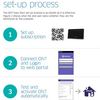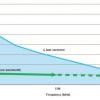By: Paula Bernier, TMC Executive Editor
Video and other rich media are driving demand for ever-faster connectivity. Indeed, Bell Labs believes demand for bandwidth to support residential triple play services will grow by 10 percent annually.
Sometimes fiber to the subscriber is the best fit to support broadband services for residential and small and medium businesses. However, existing copper continues to have an amazing ability to be enhanced to meet broadband requirements. Indeed, copper-based technologies such as VDSL2 vectoring, Vplus, and G.fast can support bandwidth rates of 100, 300mbps or even 1gbps.
To decide which areas are ideal candidates for fiber-to-the-home (FTTH) or business, and which can be more than adequately served with copper-based technologies, Bell Labs Consulting suggests that service providers consider:
- Whether the primary customer base is residential or SMB
- The typical socio-economic status of the households
- The average size of the household or business
- And, if the predominant customers are businesses what kinds of businesses.
“To do this, service providers need to conduct a thorough access study, including a detailed market analysis of the service area,” Mohamed El-Sayed, consulting manager of the network strategy and technology evolution practice of Bell Labs, writes in an aptly titled recent TechZine article, Study shows ultra-broadband potential of copper. “With this information, the service provider can determine present and near-future bandwidth demand.”
The average bandwidth required for a fixed network in a residential area can vary significantly based on all of the above. Here are a few of the many related data points mentioned in the blog. A study by Alcatel-Lucent suggests that the current upper bound broadband access rate is about 50mbps and will be 100mbps by 2020. A Bell Labs study for a major operator in Western Europe indicates 40mbps is sufficient for triple play resident services there. And a study by U.K. government regulator Ofcom reports that average fixed residential broadband subscribers get 22.9mbps, and that broadband with a minimum download speed of 30mbps is available to three-fourths of subscribers by only has seen 21 percent penetration.
“For residential and SMB subscribers, high-speed copper technologies can deliver bandwidth in excess of current and anticipated demand,” says El-Sayed.
The bottom line is that extending the life of copper provides two major benefits. First, it is less costly than putting in fiber particularly in residential or rural areas. Second, it enables service providers to offer ultra-broadband services quickly. In a hotly competitive world with a seemingly insatiable appetite for high-speed services now, this point is as if not as important as the first.











